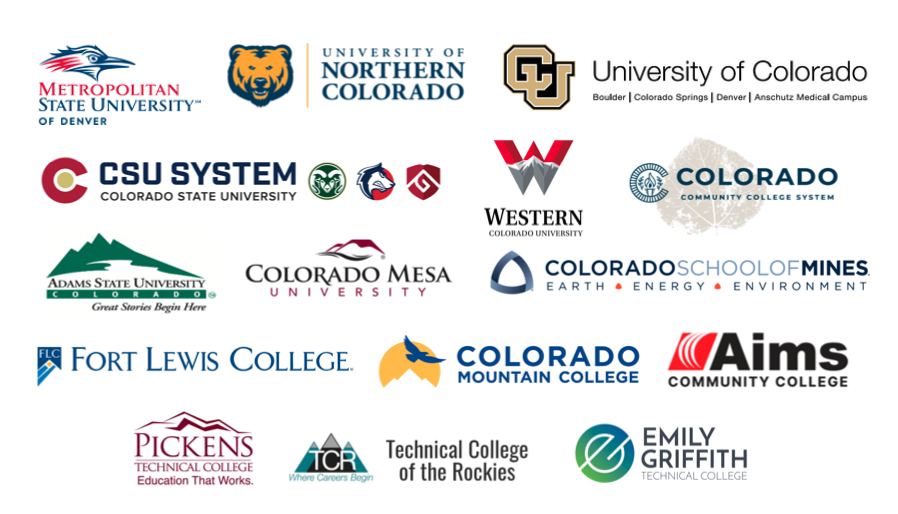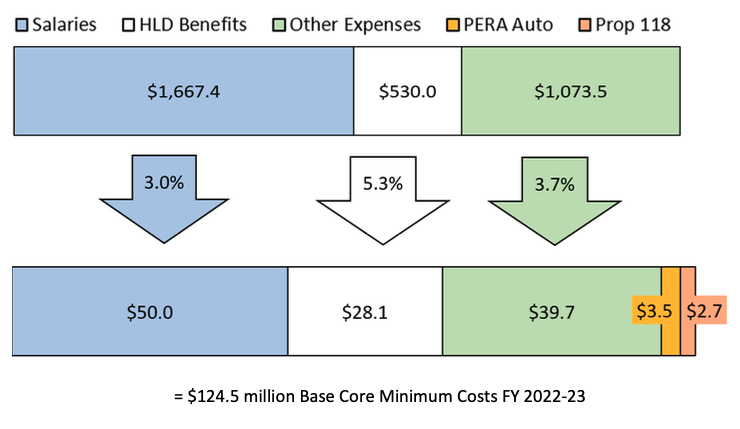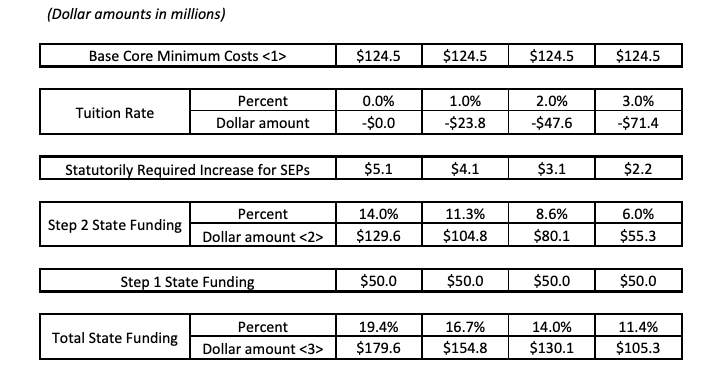Request Information
Ready to find out what MSU Denver can do for you? We’ve got you covered.
Jan. 7, 2022
Dear Members of the Joint Budget Committee,
Thank you for your investments in higher education last year, along with your work to increase higher education funding above inflation at every opportunity over the past five years. You deserve credit and our gratitude for prioritizing higher education in light of the many other demands you face each session. Your investments allowed us to address equity gaps and deferred investments, hold tuition flat in many cases, and to provide the high-quality services our students deserve. These efforts contribute to greater student retention, more highly skilled graduates, and less student debt, and reflect your acknowledgment of the transformative role higher education plays in our state.
A high-quality higher education system is the foundation of a healthy society. The work American colleges and universities do directly advances individual prosperity, economic vitality, and civil society in a democracy. Societies that fail to invest in their education systems fail to compete in a globalized economy, and are burdened by increased demand for social services, rising incarceration rates, and civil unrest.
Unfortunately, after years of stagnant public investment in higher education, this is the trajectory Colorado has been on. Now is the time to double down on your recent investments to reverse this course.
Greater state investment will keep higher education affordable and is one of the most valuable investments a state can make in its future.
Individuals with post-secondary credentials are 3.5 times less likely to live in poverty, 44% more likely to report very good or excellent health, 4.9 times less probable to be in jail or prison and 74% less prone to be out of the labor force.
Over their lifetimes, college graduates pay 215% more in taxes and cost the government 39% less in services from the state. The lifetime fiscal effect for earning a degree is $355,000. With the average cost of a Colorado degree at a public institution (over six years) at just over $45,000, higher education offers a tremendous return on investment for an individual and for the state.
These data make it clear: an investment in higher education pays off, for the state, for families and for society.
Unfortunately, our state has fallen severely behind in prioritizing its investment and the effects are starting to show. Too many Coloradans cannot afford the rising tuition needed to offset the state’s low levels of investment in higher education and are failing to acquire the skills needed to participate in a complex and globalized economy. As of 2018, Colorado students carry 64% of the cost of college compared to 2001 when state investment covered 68 percent of costs while students and families contributed the balance.
As the state’s Master Plan points out, Colorado now has some of the largest disparities in higher education equity by race and ranks 50th in the nation in the divide between the percentage of adult Hispanic Coloradans who have earned an associate or bachelor’s degree and the percentage of degree-holding non-Hispanic whites.
The impact of this reality cannot be ignored.
Colorado employers spend millions to import talent because demand for our graduates exceeds the number of students we are able to serve with current levels of state funding. As an example, 57% of Colorado’s nurses are educated out of state; our inability to fill this talent pipeline due to a lack of adequate higher education infrastructure has led to a severe workforce crisis in the midst of a global pandemic.
Meanwhile, from 2001 to 2018, the self-sufficiency standard for a three-person family in Colorado has increased by an average of 78% to $59,694. One in four Colorado households lack sufficient income to cover necessities such as food, shelter, health care and childcare and Hispanic and African American households are disproportionately represented in this group.
While the state has fallen behind in investing to educate our local workforce to a level that meets employer needs, the cost of living and thriving has become more expensive and challenging. This creates a unique strain on Coloradans seeking economic advancement that even more greatly impacts underrepresented minorities. At a time in our state where persons of color are the fastest growing demographic, we cannot, and should not, accept these outcomes for our community.
Our message is clear: Colorado is now at a dangerous inflection point. Continuing on the current path will result in a less competitive workforce, where economic opportunity is ever more unequally distributed, more Coloradans require taxpayer supported social services, and our civil society is unable to cope with the challenges of the 21st century.
The good news is, we can choose to reject this future by making a real investment today. We have a unique opportunity to accelerate our course reversal now, given the additional $3.2 billion, much of which are one-time funds, projected to be available in the General Fund for the 2022-23 fiscal year. The long-term payoff will more than compensate for this up-front investment. The payoff is the promise a vibrant higher education system holds—the growth of a community of pioneers, skilled workers, business and civic leaders robustly engaged in advancing an innovative and competitive economy as part of a vibrant inclusive democracy. Let’s choose to invest in this future today.
The following budget request charts a way forward. It outlines how to further reverse these dangerous trends and capitalize on the opportunities in front of us. It offers options on a continuum for lawmakers to adjust the ratio of tuition vs. state investment this year and beyond. We are grateful for the legislature’s leadership and are proud to partner with you in charting a better future for our state.
Leah L. Bornstein, President, Aims Community College
Nancy Chisholm, President, Western Colorado University
Janine Davidson, President, Metropolitan State University of Denver
Andy Feinstein, President, University of Northern Colorado
Tony Frank, President, Colorado State University System
Joe Garcia, Chancellor, Colorado Community College System
Carrie Besnette Hauser, President & CEO, Colorado Mountain College
Paul Johnson, President, Colorado School of Mines
Randy Johnson, Executive Director, Emily Griffith Technical College
Cheryl D. Lovell, President, Adams State University
John Marshall, President, Colorado Mesa University
Teina McConnell, Executive Director, Pitcken Technical College
Todd Saliman, President, University of Colorado System
Tom Stritikus, President, Fort Lewis College
Paul Vogt, President, Technical College of the Rockies

FY 2022-23 Budget Request and Agreement Points

